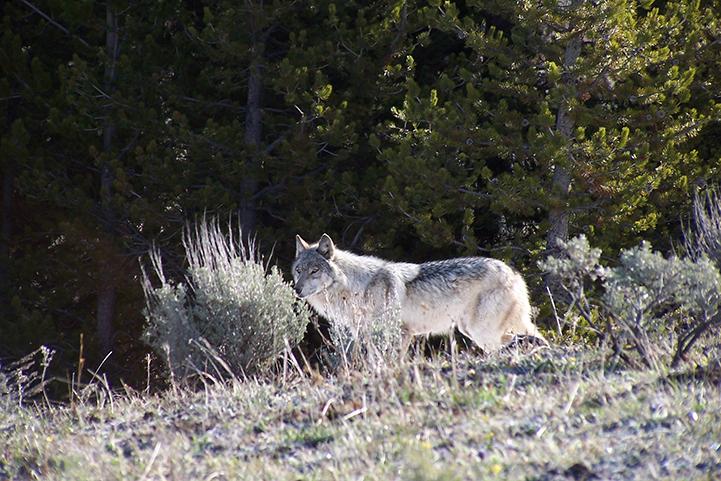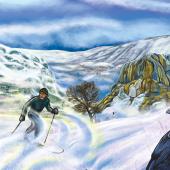All in the Family
The Yellowstone wolf genealogy project.
The powerful, bison-hunting Mollies and the formidable Druids. The Canyons and their leader, the legendary white alpha female. The Lamars, Junction Buttes, and more. You’ll find all the past and present Yellowstone packs and their members—the most famous population of wolves on the planet—in the Yellowstone Wolf Genealogy Project and its ground-breaking Wolf Genealogy Tree.
Beginning with the wolves that were reintroduced into Yellowstone in 1995, the Wolf Genealogy Tree includes the lineages and life stories of every generation of Canis lupus up to present day. This comprehensive resource is the first of its kind in the world, and it’s free and online. It takes just a few moments to register for access; see below for information.
"Wolves have been demonized in some parts of the world for many centuries," says project director Jim Halfpenny, Yellowstone biologist, tracker, and author. "But we share a variety of our most basic traits with these animals—like pack relationships and how we care for our young—and I think that wolf behavior connects them to us. And the wildness of the species has a deep appeal that transcends categories like age and background."
According to Dr. Halfpenny, the Wolf Genealogy Tree is a continuation of his books Discovering Yellowstone Wolves and Charting Yellowstone Wolves, and its goal is the creative sharing of information through innovative technology. In Halfpenny’s words, this offers everyone "a digital portal into the lives of wolves and their relationships with one another even if you never have the opportunity to visit the national park."
Project co-director and naturalist Leo Leckie adds that "with the Wolf Genealogy Tree, you can follow a particular wolf, and even create a poster or customized book through the website. A science class in another part of the country or the world might use the Wolf Genealogy Tree to study genetics and population patterns. People can tap into a wealth of information according to their own interests, and our hope is that this will lead to increased awareness of wildlife and conservation issues where they live."
The Genealogy Tree allows you to immerse yourself in the world of these remarkable canines—their connections to one another, their ancestors and offspring, and their individual characteristics. For example, take the white alpha female of Canyon pack, who was in the headlines this spring after being illegally shot while inside the park boundaries.
Using the Wolf Genealogy Tree, you learn that this female was born into the Hayden Valley pack, and that both of her parents were killed by members of the Mollies pack. You also learn that she reached the age of 12, over twice the average life span of wolves in the wild, and that she and her mate were together as an alpha pair for eight years, a record for Yellowstone pairs. This is just a sampling of the information about the life and lineage of this famous white wolf.
Whether you’re a wolf watcher, teacher, student, someone who wants to follow a particular pack, or simply a fan of animals, Halfpenny and Leckie believe that the project will appeal to you. "I know there are powerful and sometimes negative feelings about wolves," says Leckie. "But in my experience, people generally have a sense of awe about Yellowstone’s wolf population. And that glimpse of the wild is something many people are searching for."
To access the Wolf Genealogy Tree, visit wolfgenes.info to learn more about the Yellowstone Wolf Genealogy Project, and select the Ancestry tab to register for access to the Wolf Genealogy Tree. There’s a mobile app that will allow you to identify and learn about individual wolves and packs on the spot whether you’re spending a morning wolf watching in the national park, or are many miles away.













